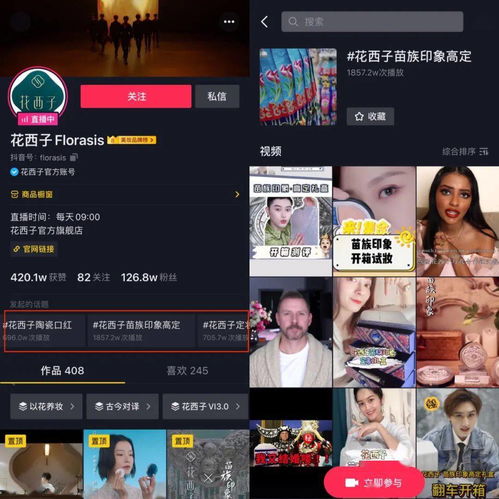The Ultimate Guide to Live Streaming: Engaging Your Audience in Real Time
Live streaming has revolutionized how we connect, communicate, and consume content in today's digital age. Whether you're a seasoned content creator or just starting out, mastering the art of live streaming can significantly enhance your reach and impact. In this comprehensive guide, we'll explore everything you need to know about live streaming, from technical setup to audience engagement strategies, and beyond.
Understanding Live Streaming
Live streaming refers to the realtime transmission of audio and video content over the internet. Unlike prerecorded videos, live streams allow for immediate interaction between the broadcaster and the audience. This instant engagement is a powerful tool for building community, fostering realtime discussions, and creating memorable experiences.
Getting Started: Technical Setup
Before you hit that "Go Live" button, you'll need to set up your technical infrastructure. Here are the essential components:
1.
Camera and Microphone
: Choose a highquality camera and microphone setup to ensure clear video and audio transmission. This could range from a basic webcam to professionalgrade broadcasting equipment.
2.
Encoding Software
: Use encoding software (e.g., OBS Studio, Streamlabs OBS) to convert your audio and video feed into a format suitable for streaming over the internet. These tools also offer features like scene switching, overlays, and transitions.
3.
Internet Connection
: A stable and highspeed internet connection is crucial for uninterrupted streaming. Consider using wired Ethernet instead of WiFi for better reliability.
4.
Streaming Platform
: Select a streaming platform that aligns with your content and audience. Popular choices include Twitch, YouTube Live, Facebook Live, and platforms like Zoom or Microsoft Teams for business and educational purposes.
Preparing for Your Broadcast
Content Planning

Define Your Goals
: Determine what you aim to achieve with your live stream. Are you educating, entertaining, or promoting a product/service? Clear goals help shape your content and engage your audience effectively.
Script or Outline
: While spontaneity is key in live streaming, having a general script or outline can keep you focused and ensure you cover key points.
Engagement Hooks
: Plan interactive elements such as Q&A sessions, polls, or live chats to keep your audience engaged throughout the broadcast.
Technical Checks
Test Equipment
: Run a thorough test of your camera, microphone, and streaming software to troubleshoot any issues before going live.
Check Audio and Video Quality
: Ensure your audio levels are balanced and video quality is optimal. Lighting and background also play crucial roles in viewer perception.
Going Live: Engaging Your Audience
Audience Interaction
Live Chat
: Encourage viewers to participate through live chat. Respond to comments, answer questions, and acknowledge viewers by name to create a sense of community.
Q&A Sessions
: Allocate time for dedicated Q&A sessions where viewers can ask questions in realtime. This fosters direct interaction and builds rapport.
Polls and Surveys
: Use polls to gather instant feedback from your audience on topics related to your stream. This not only engages viewers but also provides valuable insights.
Visual and Creative Elements
Overlay Graphics
: Implement overlay graphics such as logos, lowerthirds, and alerts to enhance visual appeal and convey information effectively.
Transition Effects
: Use transitions between scenes or segments to maintain viewer interest and signal changes in content.
Promotions and Calls to Action (CTAs)
Promote Future Streams
: Announce upcoming streams or events to keep your audience informed and encourage repeat viewership.
CTAs
: Include calls to action such as subscribing, following, or visiting your website to drive engagement beyond the live stream.
PostBroadcast: Analyzing Performance and Engagement
After your live stream concludes, take time to evaluate its success:
Audience Metrics
: Review viewer count, chat activity, and audience retention to gauge engagement levels.
Feedback Analysis
: Consider feedback from viewers to refine future content and improve audience satisfaction.
Content Repurposing
: Repurpose highlights or valuable segments from your live stream into shorter videos or social media posts to extend its reach.
Legal and Ethical Considerations
Copyright Compliance
: Respect copyright laws when using music, images, or other content in your live stream. Obtain necessary permissions or use royaltyfree alternatives.
Privacy and Consent
: Respect participants' privacy and obtain consent before featuring individuals in your live stream, especially in public or shared spaces.
Advanced Strategies and Tools
As you gain experience with live streaming, consider exploring advanced strategies and tools:
Multistreaming
: Broadcast simultaneously to multiple platforms to reach a broader audience.
Monetization
: Explore monetization options such as subscriptions, donations, or sponsorships once you have a dedicated viewer base.
Analytics and Insights
: Utilize analytics tools provided by streaming platforms to gain deeper insights into viewer behavior and preferences.
Conclusion
Mastering the art of live streaming goes beyond technical proficiency; it requires creativity, engagement, and a genuine connection with your audience. By leveraging the power of realtime interaction and thoughtful content planning, you can create impactful live streams that resonate with viewers and elevate your online presence. Remember, the ultimate goal of live streaming is not just to broadcast but to build a community and forge meaningful connections in the digital realm.





